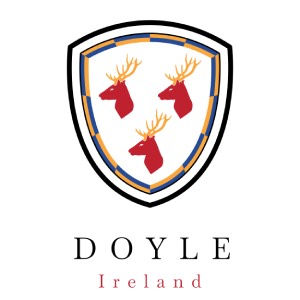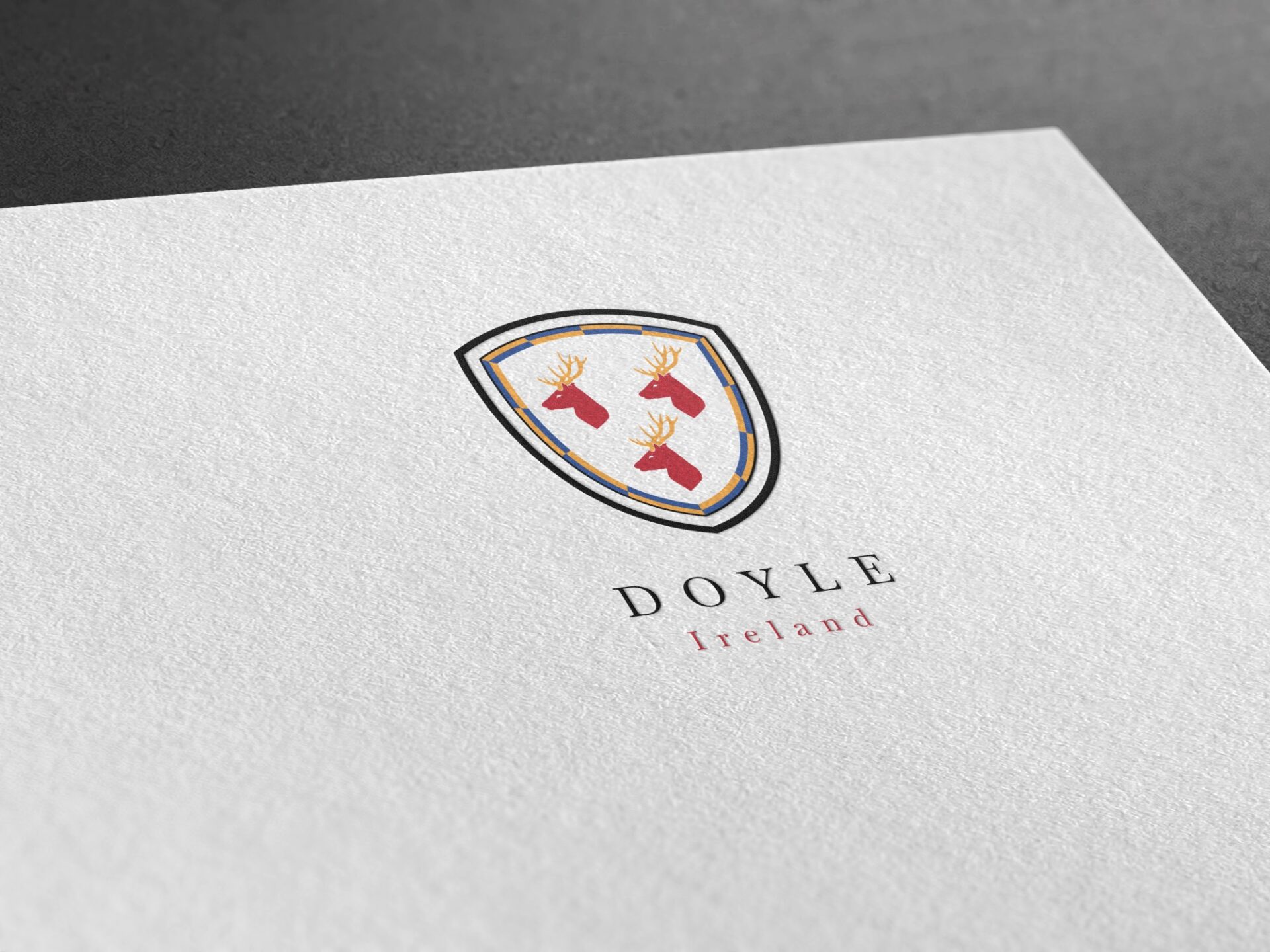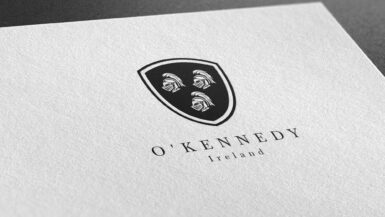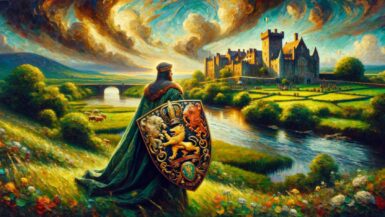The Doyle surname, a prominent name in Irish history, derives from the Old Gaelic “Dhubhghaill,” composed of the elements “dubh,” meaning “black,” and “ghaill,” meaning “stranger.”
Etymology and Meaning
Doyle is an anglicized form of the Gaelic Ó Dubhghaill, which means “descendant of Dubhghall.” The personal name Dubhghall consists of two elements: “dubh” translates to “black,” and “gall” means “stranger” or “foreigner.” This name was used to describe the darker-haired Danes, distinguishing them from the fair-haired Norwegians.
Earliest Known Usage
The earliest usage of the surname Doyle can be traced back to the 10th century in Ireland, where the name was quite popular. The name has been recorded in various historical documents since then, reflecting its longstanding presence in Irish culture and history.
Geographic Distribution
Originally, the Doyle family was mainly found in the southeastern part of Ireland, particularly in the counties of Wexford, Wicklow, Dublin, and Carlow. Over time, the family spread throughout Ireland and then globally due to migration and diaspora.
Original Geographic Location
The ancestral home of the Doyle family is in Leinster, the eastern province of Ireland. They were most densely populated in the counties of Wexford and Wicklow.
Migration Patterns
The Doyle family, like many other Irish families, experienced significant migration during the 19th century due to the Great Irish Famine. Many Doyles migrated to the United States, Canada, Australia, and England during this time, leading to a global spread of the surname.
Historical Context
Notable Historical Events
Members of the Doyle family have been involved in numerous notable events throughout Irish history. They played significant roles in the political, religious, and cultural life of Ireland.
Involvement in Key Moments in History
The Doyle family was notably involved in the 1798 Rebellion, a significant event in Irish history that aimed to end British rule.
Notable Bearers of the Surname
Famous Individuals
Sir Arthur Conan Doyle, the British author famous for creating the character Sherlock Holmes, is one of the most renowned bearers of the Doyle surname.
Influential Figures
Jack Doyle, also known as “The Gorgeous Gael,” was a famous Irish boxer, singer, and actor in the 20th century.
Variations of the Surname
Spelling Variations
Common spelling variations of the surname Doyle include O’Doyle, Doyel, Doile, and Doule, reflecting the phonetic interpretations of the Gaelic name.
Regional Differences
In some regions of Ireland, the prefix “O,” meaning “descendant of,” is sometimes added, leading to variants like O’Doyle.
Current Statistics and Distribution
Frequency and Global Distribution
The Doyle surname remains widespread globally, with a high prevalence in the United States, the United Kingdom, Australia, Canada, and Ireland.
Changes Over Time
The distribution of the Doyle surname has changed significantly over time, reflecting the impact of historical events such as the Great Famine and the widespread Irish diaspora.
Family Coat of Arms

The Doyle family crest is a refined and symbolic heraldic emblem that embodies the family’s values, heritage, and aspirations. The crest features a white background, known as argent in heraldry, which symbolizes purity, innocence, and peace. This choice of background suggests the family’s dedication to sincerity and clarity of purpose, projecting an image of integrity and nobility.
Surrounding the white field is a two-color border in blue and gold. Blue, or azure in heraldry, is traditionally associated with loyalty, truth, and strength. It reflects the family’s steadfast commitment to these virtues. Gold, or or, represents generosity, wisdom, and high ideals. The combination of blue and gold in the border underscores the noble aspirations of the Doyle family, highlighting their respect for tradition and their pursuit of excellence.
Prominently displayed on the crest are three stag’s heads, each equipped with gold antlers. The stag is a well-regarded heraldic symbol denoting grace, peace, and harmony with nature, as well as the ability to navigate challenges. The gold antlers enhance these meanings, emphasizing nobility and the capacity for leadership and regeneration. The use of three stag’s heads may signify various family attributes such as resourcefulness, resilience, and a strong connection to the natural world.
Together, these elements of the Doyle family crest — the white background, the blue and gold border, and the three stag’s heads with gold antlers — forge a powerful visual narrative. This narrative highlights a lineage characterized by purity, loyalty, and a regal connection to both nature and tradition.






Leave a reply